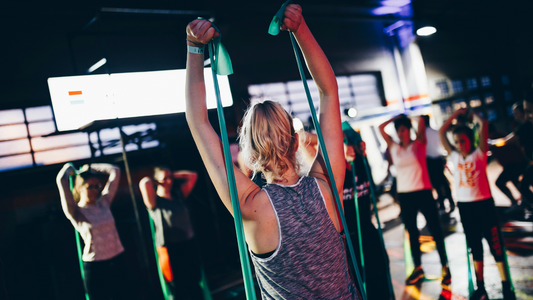

Breaking Down the 4 Different Activity Levels: What Do They Mean?
Understanding your activity level and how it impacts both your day-to-day and long-term health can help you make informed decisions about how to improve your overall fitness. In the modern age, fewer people than ever are getting an adequate amount of exercise in their daily lives. Office jobs and other conveniences of our current era make physical activity and exertion less common.
What is an Activity Level?
Your activity level is the total energy you expend in one day. However, we often look at activity level for an entire week to see the full picture of someone’s activity level.
There are four different activity levels. Activity levels are determined by both the type of physical activity you do in a given week and the intensity of that activity. Your activity level impacts your overall health, because exercise can lead to better health. Knowing your activity level will help you make the necessary changes to increase your activity — if needed — and reach any fat loss or body composition goals you may have.
The Four Activity Levels
There are four activity levels: sedentary, lightly active, moderately active, and very active. We are going to break down what each of these activity levels means so you have a better idea of your current activity level and what you need to do to improve your daily and weekly activity.
Sedentary
Sedentary people get most of their daily movement from household chores and other daily tasks, like washing dishes, doing laundry, light yard work, grocery shopping, and walking to and from their car in the parking lot. These individuals are likely not doing any additional exercise to supplement their baseline and most often work at a desk or a different job where they sit for a long period of time.
If you are sedentary, this is a sign to increase your daily movement. Increasing activity when sedentary might seem like an insurmountable challenge, especially because you aren’t currently making time for exercise. However, higher activity levels have known health benefits, even in people considered obese or overweight who don’t lose weight.
If this sounds like you, it’s time to incorporate more movement into your life. You can start small by choosing easier activities and then working your way up. If you work a desk job, one of the best things you can do is get your movement in at your desk with fitness pedals or a walking pad coupled with ergonomic standing desk adjustment.
Other easy options to incorporate more activity are easy neighborhood walks, dancing, and yoga.
Lightly Active
Individuals who are lightly active exercise for about three hours a week in addition to daily tasks and chores. This is easier exercise; you will get your heart rate pumping, but the workout may not have a high intensity.
If you are lightly active, you may want to consider increasing your activity level so you can get more physical activity in. Increasing your physical activity will help you get stronger and gain muscle mass, build aerobic endurance, and allow you to burn more fat during activity. Since you have made a habit of exercise, moving from lightly active to the next activity level will mean increasing the length and/or vigor of your workout.
For example, if you regularly jog for 15 minutes every day, increase your total jogging time up to thirty minutes. Alternatively, try to increase the intensity by doing a speed workout a few times a week.
Using the same example of a current routine of jogging thirty minutes a day, you could also increase from lightly active to moderately active by adding something additional to your workout, like weightlifting or a more difficult yoga class.
Moderately Active
People who are moderately active workout for three to four hours per week in addition to daily tasks and chores. These are people who have chosen to pursue their fitness and likely have some scheduled workouts. Typically, individuals who are moderately active will exercise everyday.
At ZOZOFIT, we think being active is incredibly important and recommend that most people aim to be, at least, moderately active. This means that fitness is part of your lifestyle.
If you want to be moderately active, but don’t know where to start, working with a coach or trainer can help you tailor your workout to your goals. Individuals at this level often have goals they are pursuing, whether it’s getting a new personal best at their next running road race or being able to lift fifty more pounds in their deadlift. Having something to work toward keeps activity interesting, and also motivates individuals at this activity level to continue seeking out activity.
Once you get to this level, consider tracking your activities with a fitness tech device like a watch or use ZOZOFIT to see how your body is changing.
Very Active
Very active people are doing at least five hours of intense activity per week on top of daily tasks and chores. Individuals at this activity level sometimes also have physically strenuous jobs, which increase their day-to-day activity level over someone who works at a desk.
If you are very active, it’s likely that you’re training with a goal in mind. You are likely planning your workouts, your nutrition, and your hydration to ensure you are in top performance. While this level of activity can be hard to maintain, a high level of activity is sure to keep the body operating well and healthy.
Tracking Your Activity Level
Are you ready to track your activity level? A tool like a watch, which can track workouts and capture heart rate, as well as ZOZOFIT, which helps you see the changes in your body composition over time, are great options. ZOZOFIT, in particular, offers insight to your overall health as it relates to your body measurements and body fat percentage. As your activity level increases, you should see a difference in your measurements, as well as a lower body fat percentage.

![zf-w-[168px] zf-h-[40px]](http://zozofit.com/cdn/shop/t/15/assets/logo-desktop.png?v=117713855448369080381753069598)


